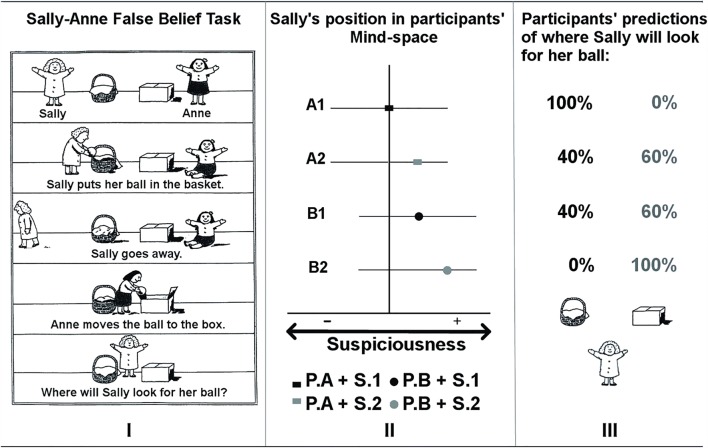Fig. 2.
Suspicious minds: How Mind-space explains performance on the Sally-Anne false belief task. In this test of theory of mind (Panel I), to respond correctly participants (P) must represent Sally’s mental state in the absence of any additional information about her, Anne, or the situation (S). In this scenario (Situation 1), an average participant (P.A; Panel II) would likely represent Sally at the population mean of suspiciousness in his/her Mind-space, and expect Sally to think that her ball was in the basket where she left it (Panel III). The same average participant (P.A) in a different situation (S.2), having prior knowledge that Sally has high levels of suspiciousness, would represent Sally at a position of high suspiciousness further from the mean. Participant A in Situation 2 might therefore represent Sally as believing that Anne may have moved her ball to the box. Another participant (P.B) who has been exposed to an untrustworthy population may, in the absence of any information (S.1), have a mean suspiciousness higher than the population average, and, positioning Sally at the mean in his/her Mind-space, similarly represent Sally as believing that Anne may have moved her ball to the box. In Situation 2, having prior knowledge that Sally has high levels of suspiciousness, Participant B would represent Sally further from his/her mean and attribute to Sally the belief that Anne has certainly moved her ball to the box. This example demonstrates how an individual’s representation of Mind-space combines with situational information to influence the inference of another person’s mental state. (Panel 1 reproduced with permission from Frith, 2003).

